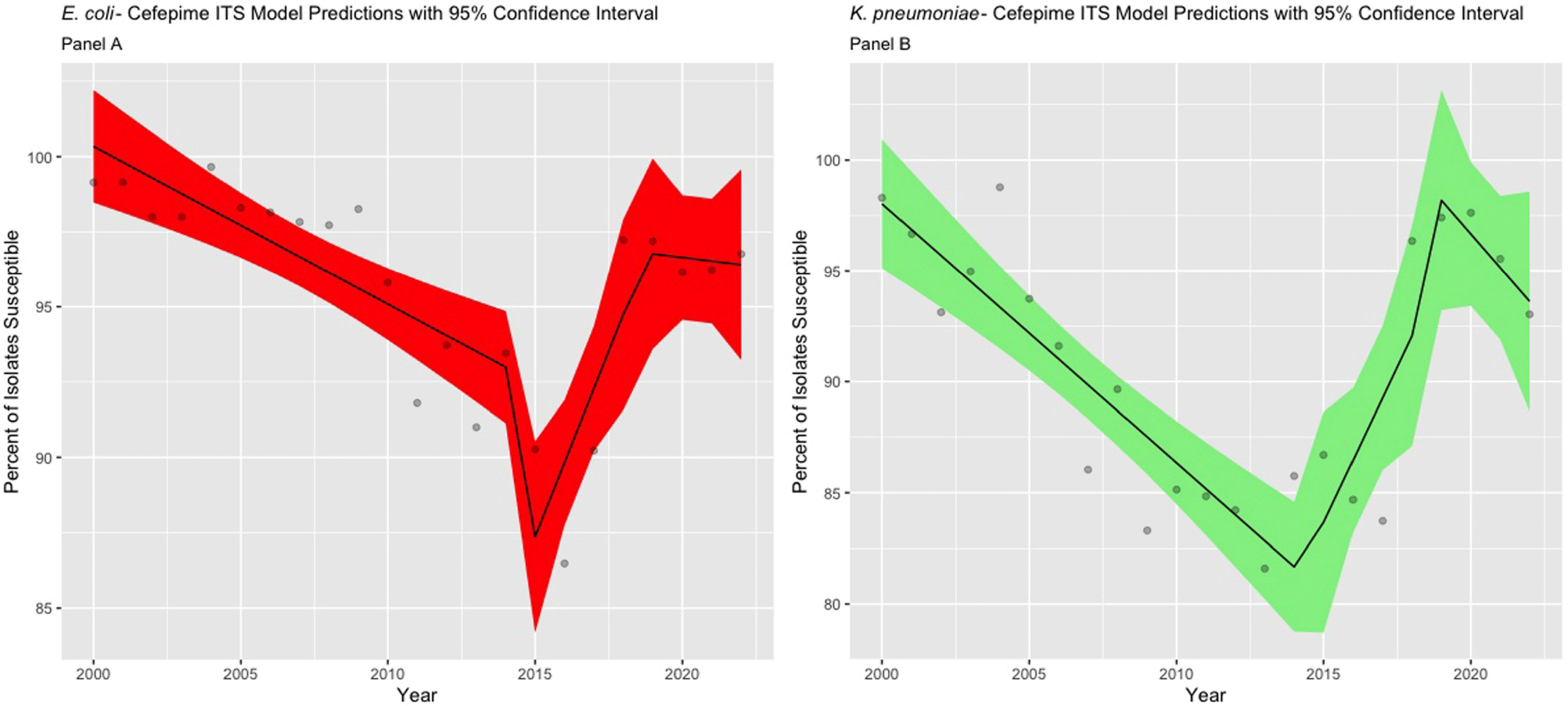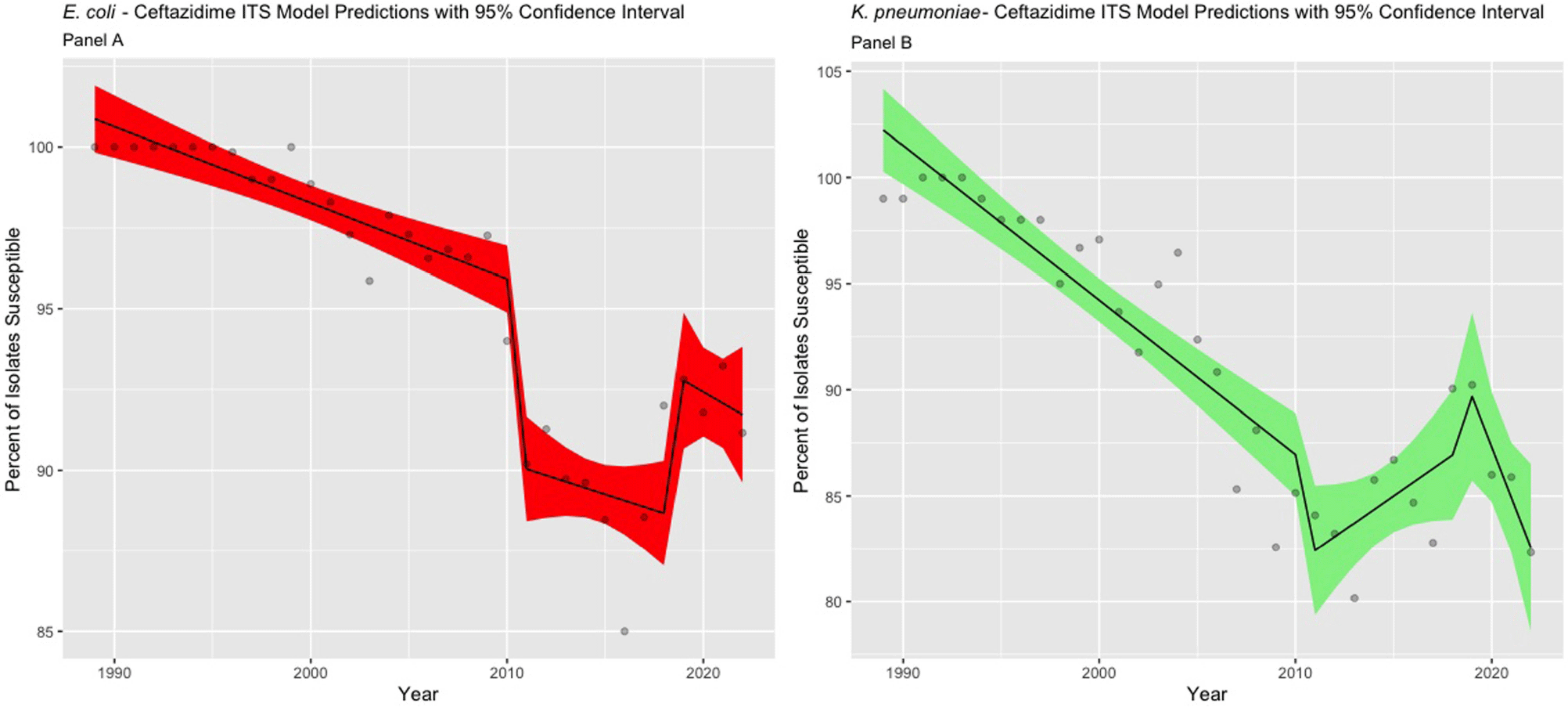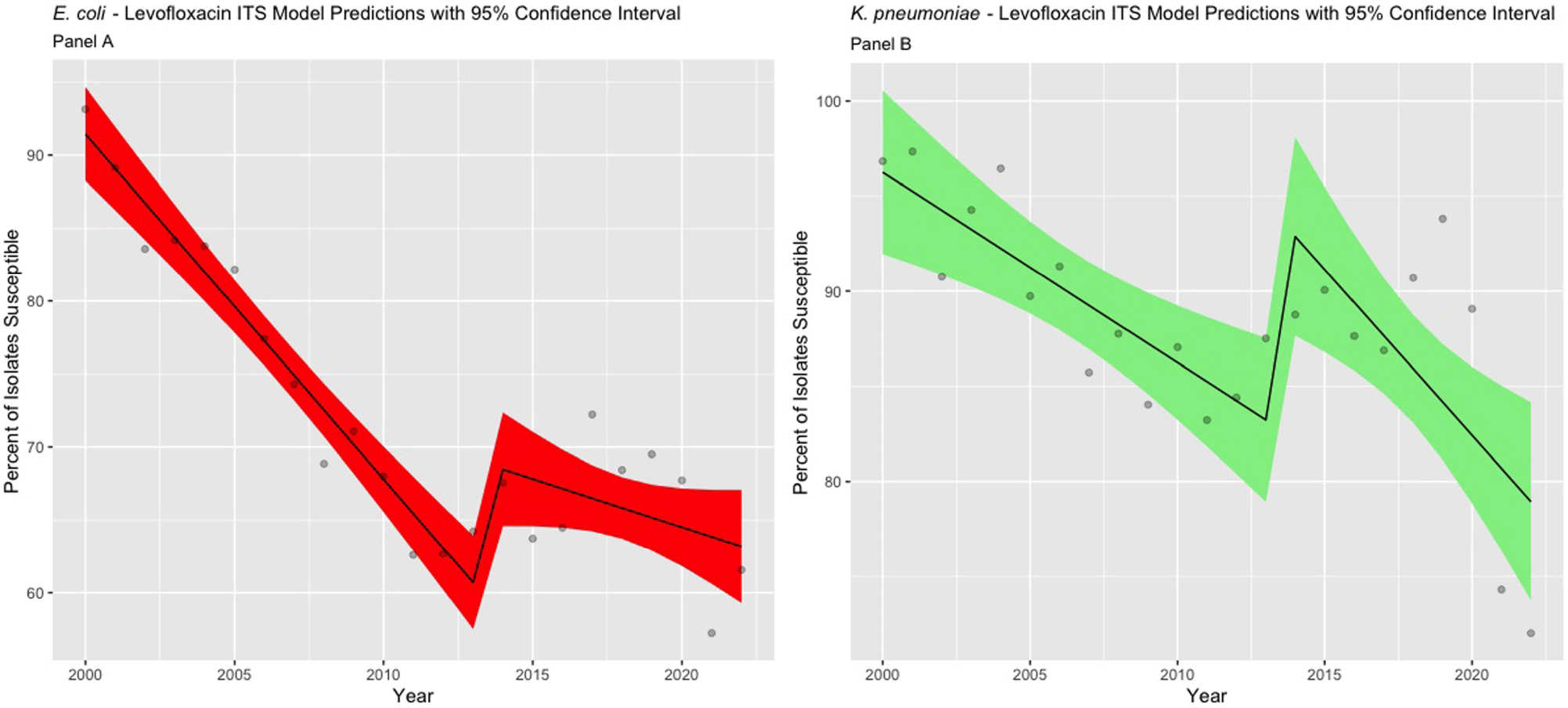307 results
Collision of liquid drops: bounce or merge?
-
- Journal:
- Journal of Fluid Mechanics / Volume 995 / 25 September 2024
- Published online by Cambridge University Press:
- 18 September 2024, A1
-
- Article
-
- You have access
- Open access
- HTML
- Export citation
Survey of VA Laboratory Practices for Carbapenem-resistant Acinetobacter baumannii and Pseudomonas aeruginosa
-
- Journal:
- Antimicrobial Stewardship & Healthcare Epidemiology / Volume 4 / Issue S1 / July 2024
- Published online by Cambridge University Press:
- 16 September 2024, p. s79
-
- Article
-
- You have access
- Open access
- Export citation
Impact of MIC Breakpoint Changes for Enterobacterales on Trends of Antibiotic Susceptibilities in An Academic Medical Center
-
- Journal:
- Antimicrobial Stewardship & Healthcare Epidemiology / Volume 4 / Issue S1 / July 2024
- Published online by Cambridge University Press:
- 16 September 2024, pp. s54-s56
-
- Article
-
- You have access
- Open access
- Export citation
Comparison of complication types in patients receiving vesicant intravenous antimicrobials or vasopressors via midlines and peripherally inserted central catheters
-
- Journal:
- Antimicrobial Stewardship & Healthcare Epidemiology / Volume 4 / Issue 1 / 2024
- Published online by Cambridge University Press:
- 05 September 2024, e116
-
- Article
-
- You have access
- Open access
- HTML
- Export citation
Significant Global Improvements for Opioid Dependent Patients Receiving 8 Sessions of Flexible Trauma Informed Psychological Therapies Whilst on Long Acting Injectable Buprenorphine: 9 Month Findings
-
- Journal:
- BJPsych Open / Volume 10 / Issue S1 / June 2024
- Published online by Cambridge University Press:
- 01 August 2024, pp. S196-S197
-
- Article
-
- You have access
- Open access
- Export citation
An Investigation Into the Acceptability of the SAFER-YMH Care Bundle for Transitions Out of CAMHS Crisis and Liaison Services
-
- Journal:
- BJPsych Open / Volume 10 / Issue S1 / June 2024
- Published online by Cambridge University Press:
- 01 August 2024, pp. S43-S44
-
- Article
-
- You have access
- Open access
- Export citation
The clinical characteristics of autistic women with restrictive eating disorders
-
- Journal:
- BJPsych Open / Volume 10 / Issue 4 / July 2024
- Published online by Cambridge University Press:
- 26 July 2024, e131
-
- Article
-
- You have access
- Open access
- HTML
- Export citation
Development and implementation of a nationwide multidrug-resistant organism tracking and alert system for Veterans Affairs medical centers
-
- Journal:
- Infection Control & Hospital Epidemiology , First View
- Published online by Cambridge University Press:
- 24 May 2024, pp. 1-6
-
- Article
-
- You have access
- Open access
- HTML
- Export citation
Chapter 3 - Multilingual Adolescent Mentors and Tailored College Knowledge for Immigrant Students
- from Part I - Beginnings
-
-
- Book:
- Supporting College Students of Immigrant Origin
- Published online:
- 16 May 2024
- Print publication:
- 23 May 2024, pp 41-63
-
- Chapter
- Export citation
How to co-create content moderation policies: the case of the AutSPACEs project
-
- Journal:
- Data & Policy / Volume 6 / 2024
- Published online by Cambridge University Press:
- 15 May 2024, e28
-
- Article
-
- You have access
- Open access
- HTML
- Export citation
‘Only my family can help’: the lived experience and care aesthetics of being resident on an NHS psychiatric/mental health inpatient dementia assessment ward – a single case study
-
- Journal:
- Ageing & Society , First View
- Published online by Cambridge University Press:
- 27 March 2024, pp. 1-22
-
- Article
-
- You have access
- Open access
- HTML
- Export citation
Evaluating the Current State of Epilepsy Care in the Province of Ontario
-
- Journal:
- Canadian Journal of Neurological Sciences , First View
- Published online by Cambridge University Press:
- 01 March 2024, pp. 1-3
-
- Article
- Export citation
Variation of subclinical psychosis across 16 sites in Europe and Brazil: findings from the multi-national EU-GEI study
-
- Journal:
- Psychological Medicine / Volume 54 / Issue 8 / June 2024
- Published online by Cambridge University Press:
- 30 January 2024, pp. 1810-1823
-
- Article
-
- You have access
- Open access
- HTML
- Export citation
The effect of timers and precommitments on handwashing: a randomised controlled trial in a kitchen laboratory
-
- Journal:
- Behavioural Public Policy , First View
- Published online by Cambridge University Press:
- 10 January 2024, pp. 1-25
-
- Article
-
- You have access
- Open access
- HTML
- Export citation
The Effect of Smectite on the Corrosion of Iron Metal
-
- Journal:
- Clays and Clay Minerals / Volume 60 / Issue 2 / April 2012
- Published online by Cambridge University Press:
- 01 January 2024, pp. 136-152
-
- Article
- Export citation
An outbreak of Salmonella Typhimurium associated with the consumption of raw liver at an Eid al-Adha celebration in Wales (UK), July 2021
-
- Journal:
- Epidemiology & Infection / Volume 152 / 2024
- Published online by Cambridge University Press:
- 30 November 2023, e6
-
- Article
-
- You have access
- Open access
- HTML
- Export citation
MWA rapid follow-up of gravitational wave transients: Prospects for detecting prompt radio counterparts
-
- Journal:
- Publications of the Astronomical Society of Australia / Volume 40 / 2023
- Published online by Cambridge University Press:
- 26 October 2023, e050
-
- Article
-
- You have access
- Open access
- HTML
- Export citation
Gastrointestinal parasites in captive olive baboons in a UK safari park
-
- Journal:
- Parasitology / Volume 150 / Issue 12 / October 2023
- Published online by Cambridge University Press:
- 01 September 2023, pp. 1096-1104
-
- Article
-
- You have access
- Open access
- HTML
- Export citation
Environmental sensor placement with convolutional Gaussian neural processes
-
- Journal:
- Environmental Data Science / Volume 2 / 2023
- Published online by Cambridge University Press:
- 03 August 2023, e32
-
- Article
-
- You have access
- Open access
- HTML
- Export citation
The alarms should no longer be ignored: survey of the demand, capacity and provision of adult community eating disorder services in England and Scotland before COVID-19
-
- Journal:
- BJPsych Bulletin , FirstView
- Published online by Cambridge University Press:
- 01 August 2023, pp. 1-9
-
- Article
-
- You have access
- Open access
- HTML
- Export citation










